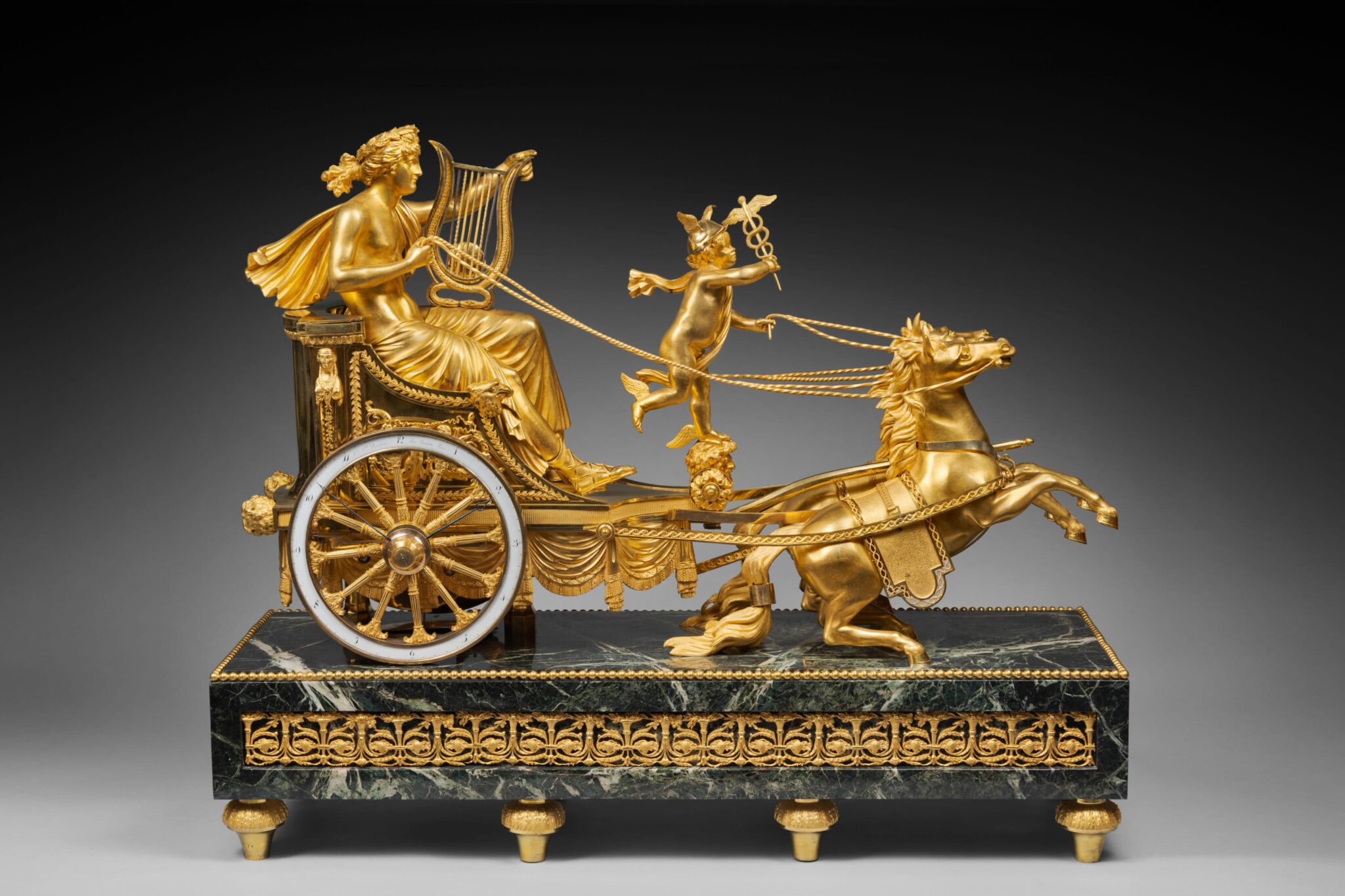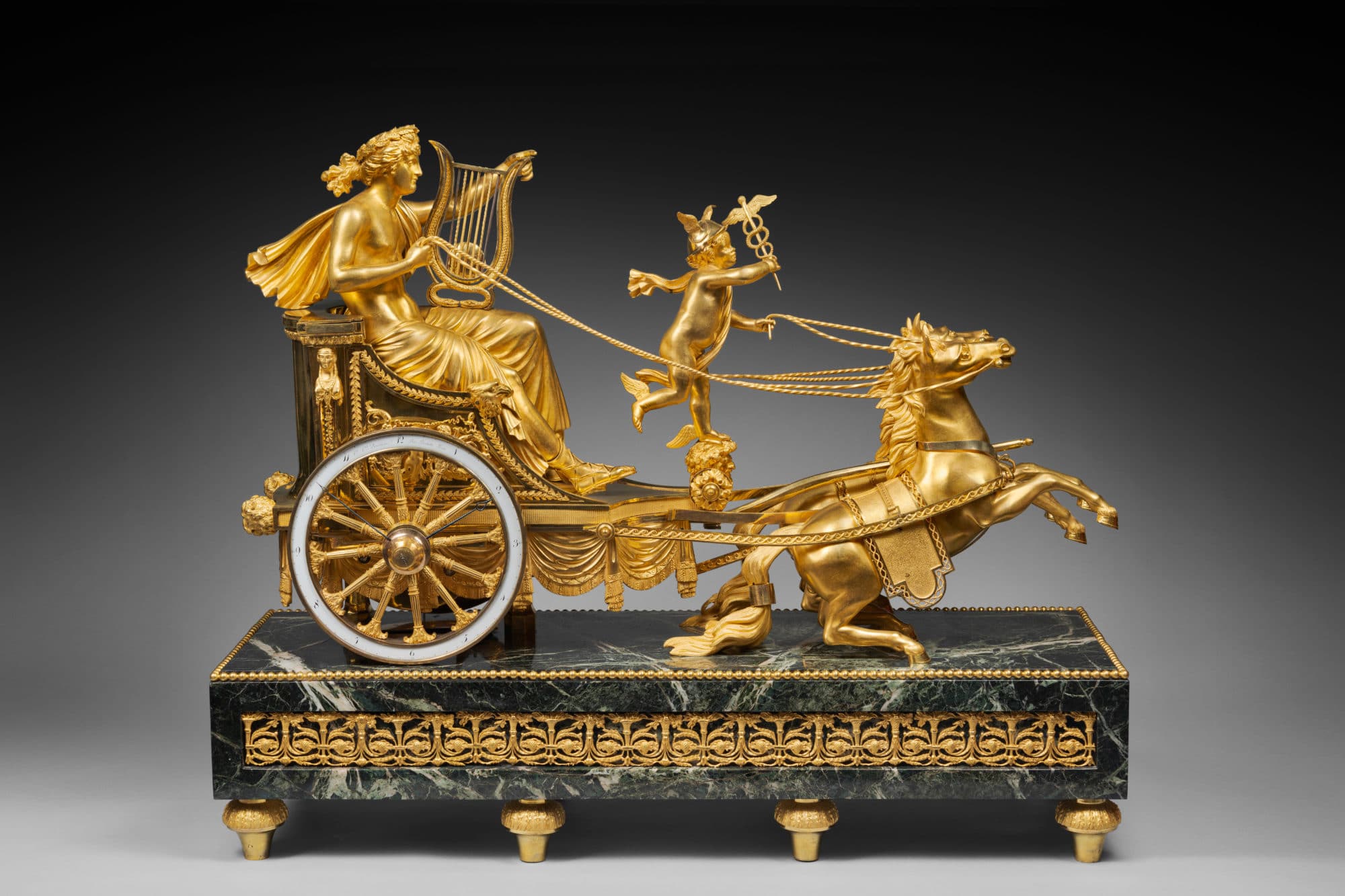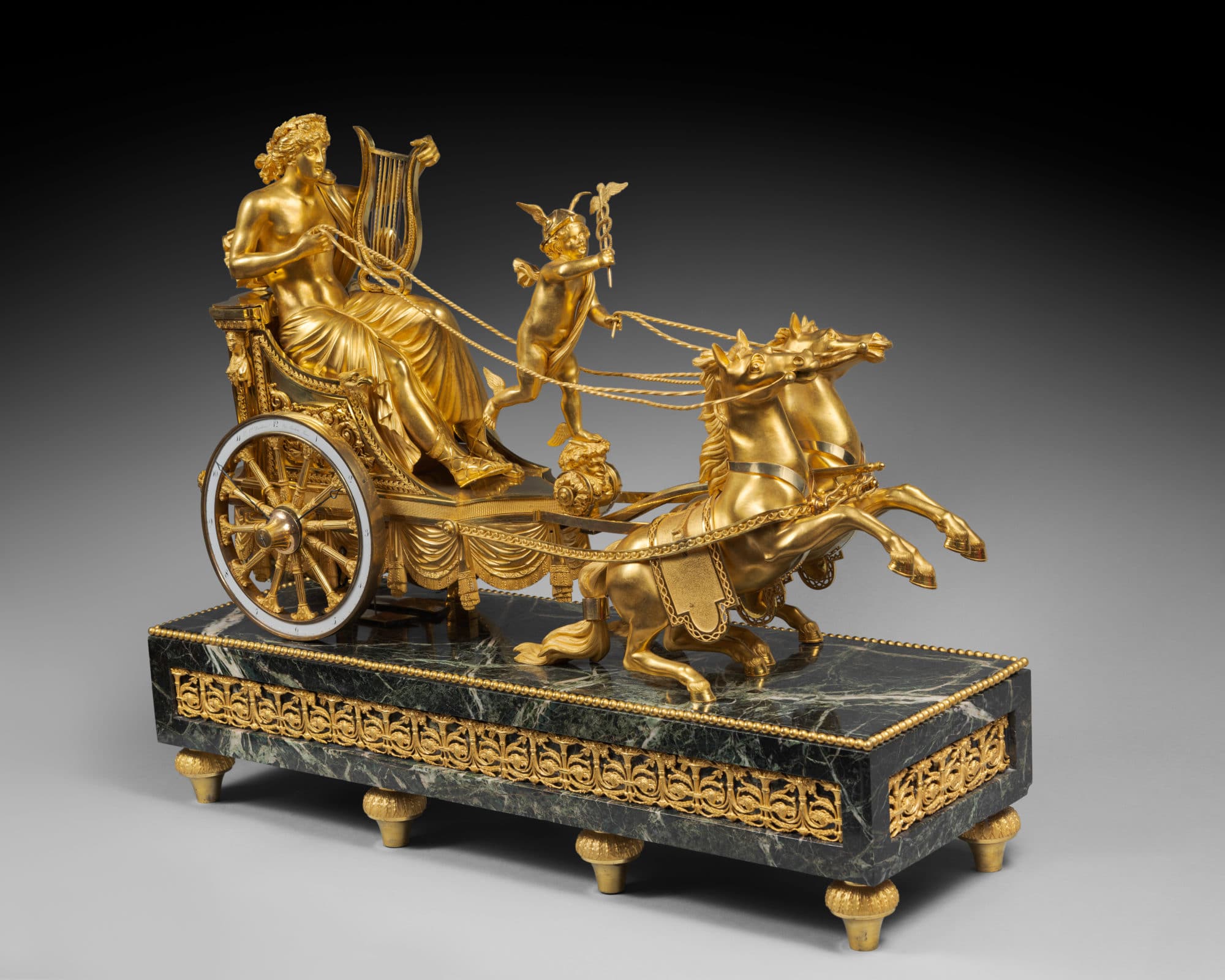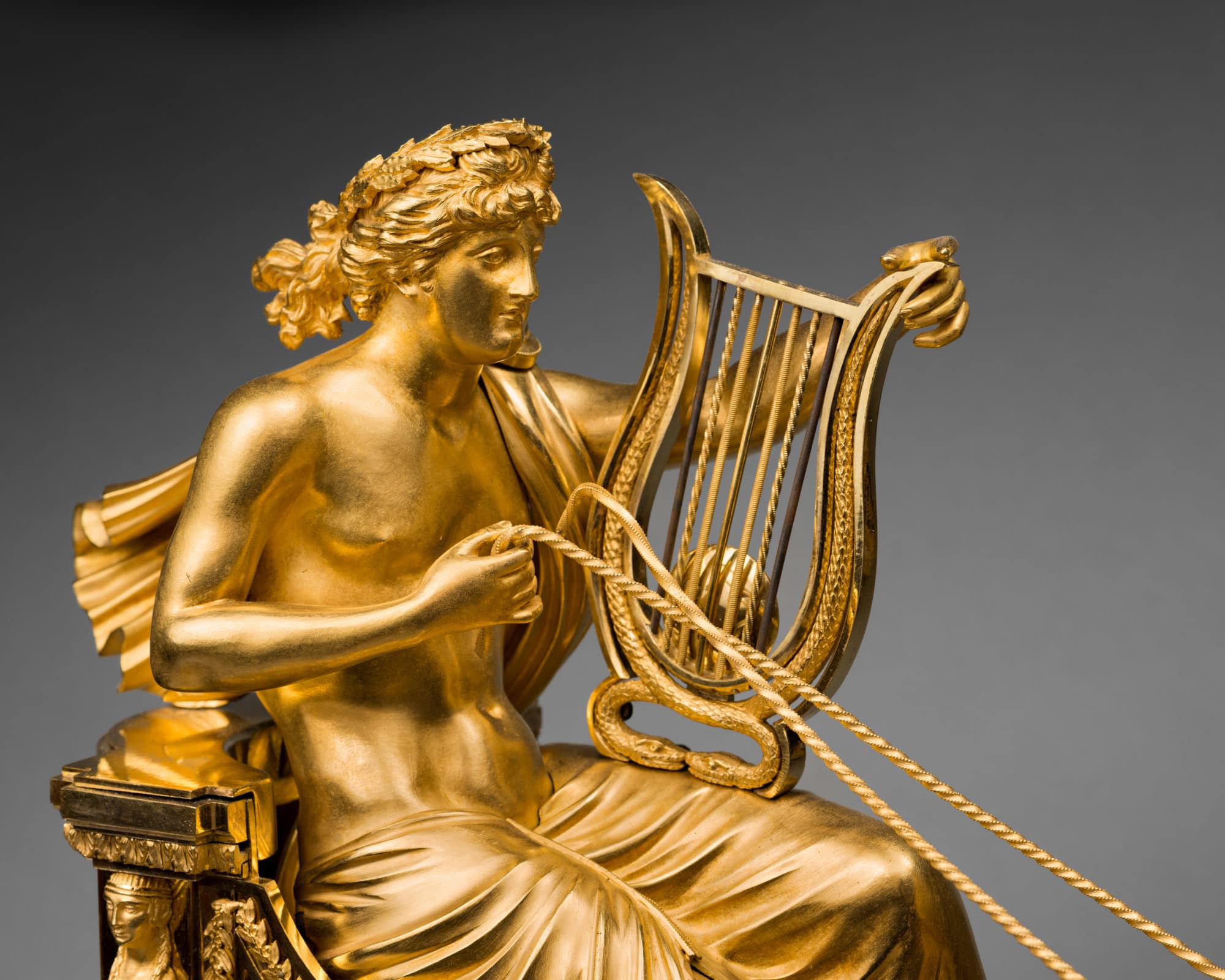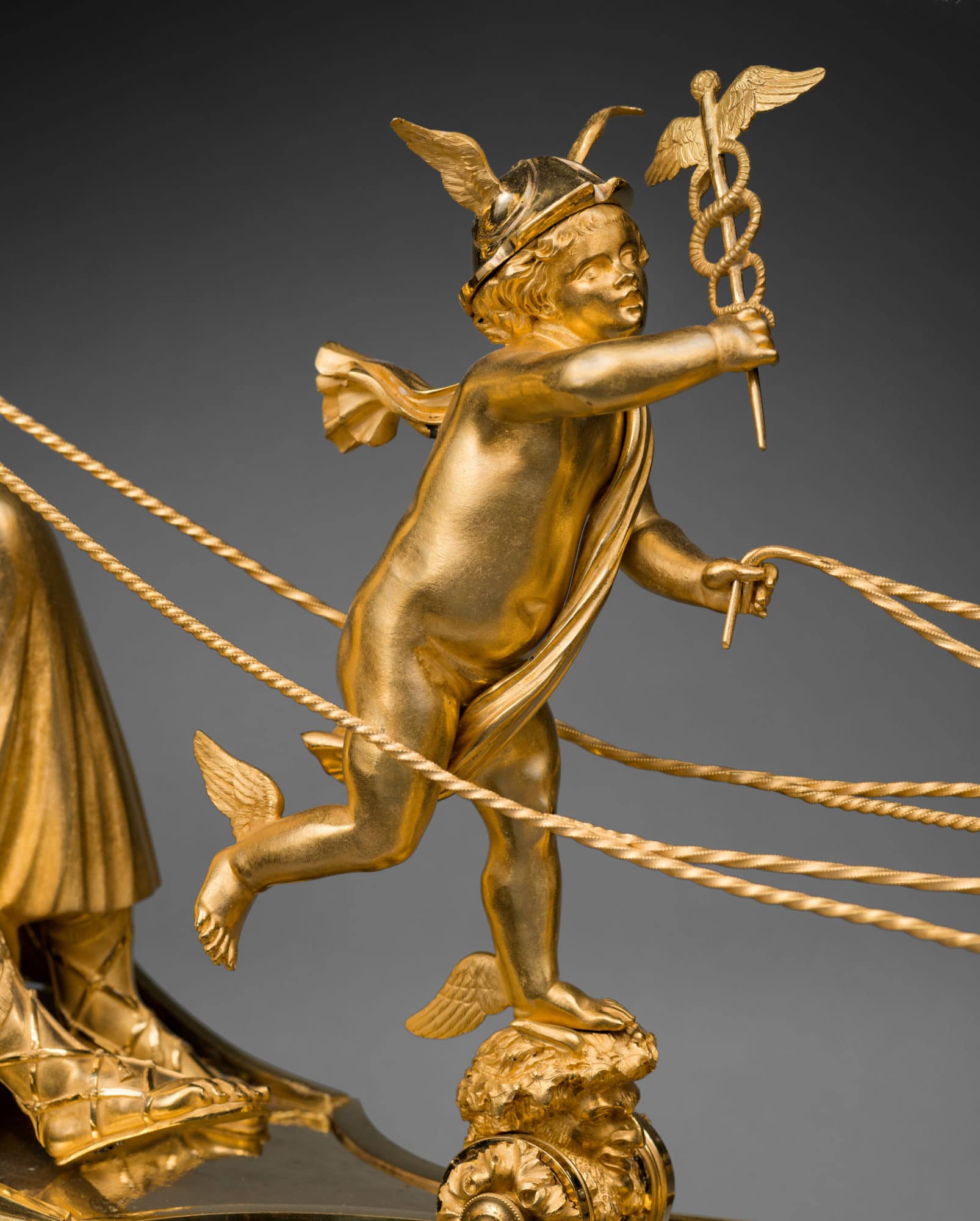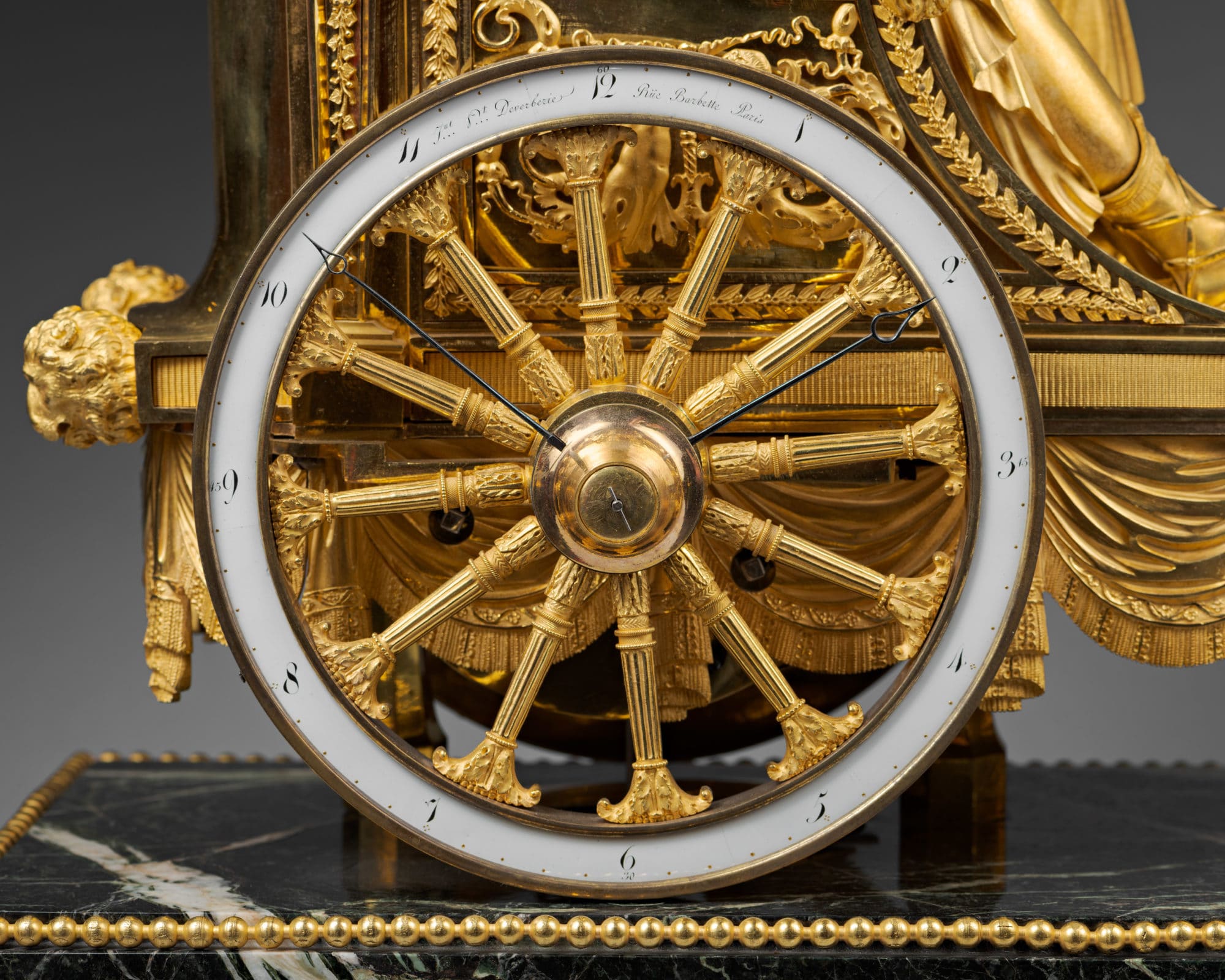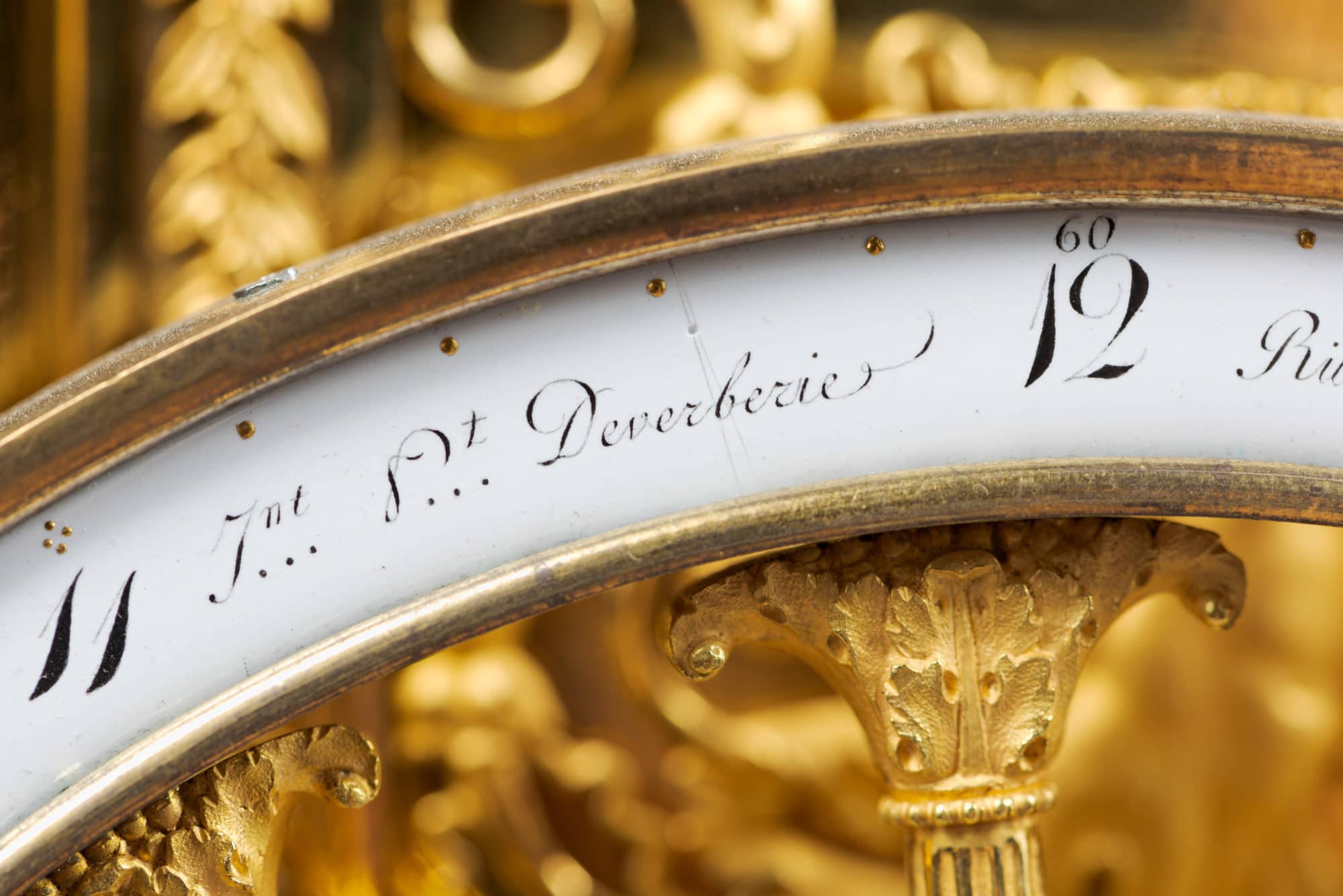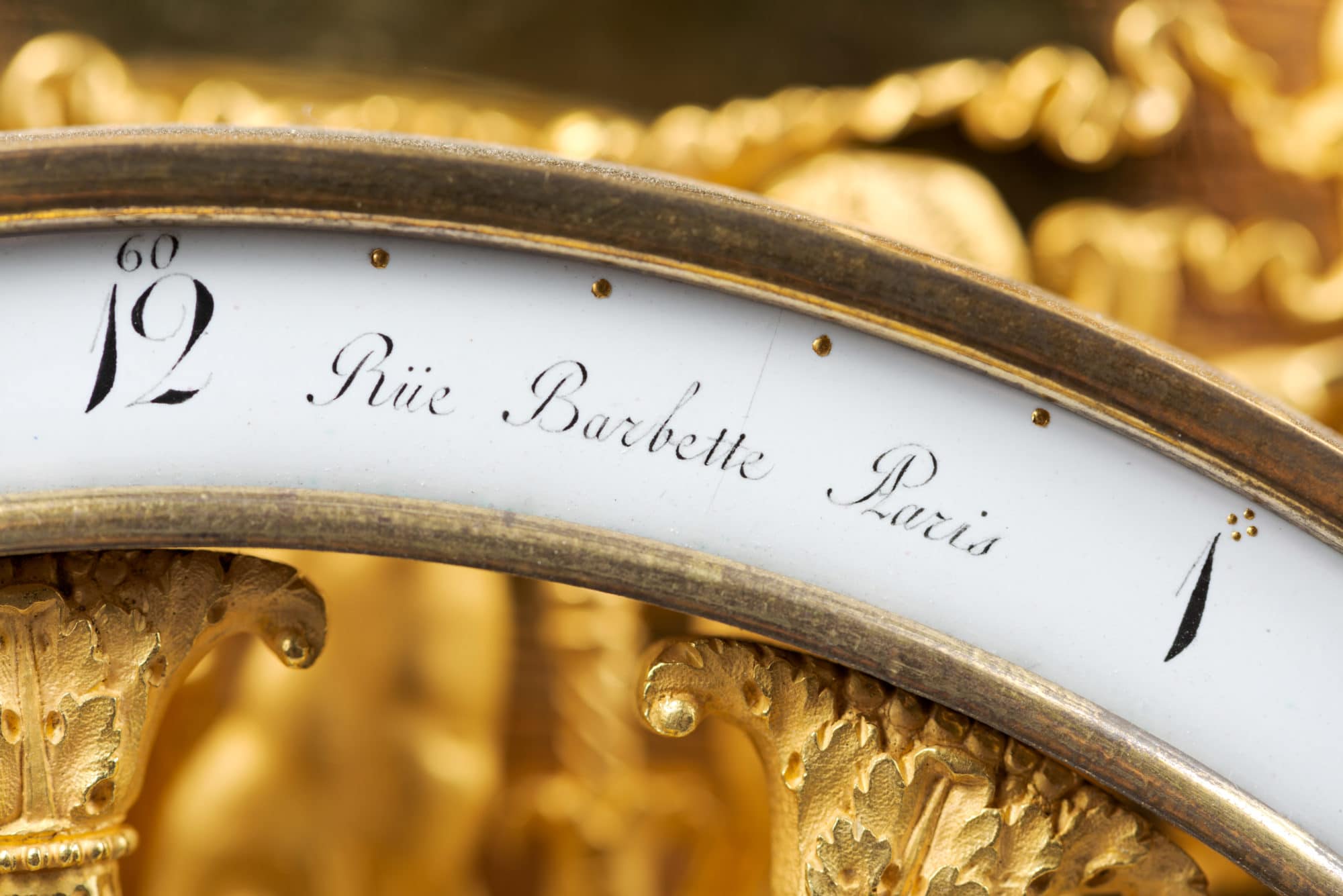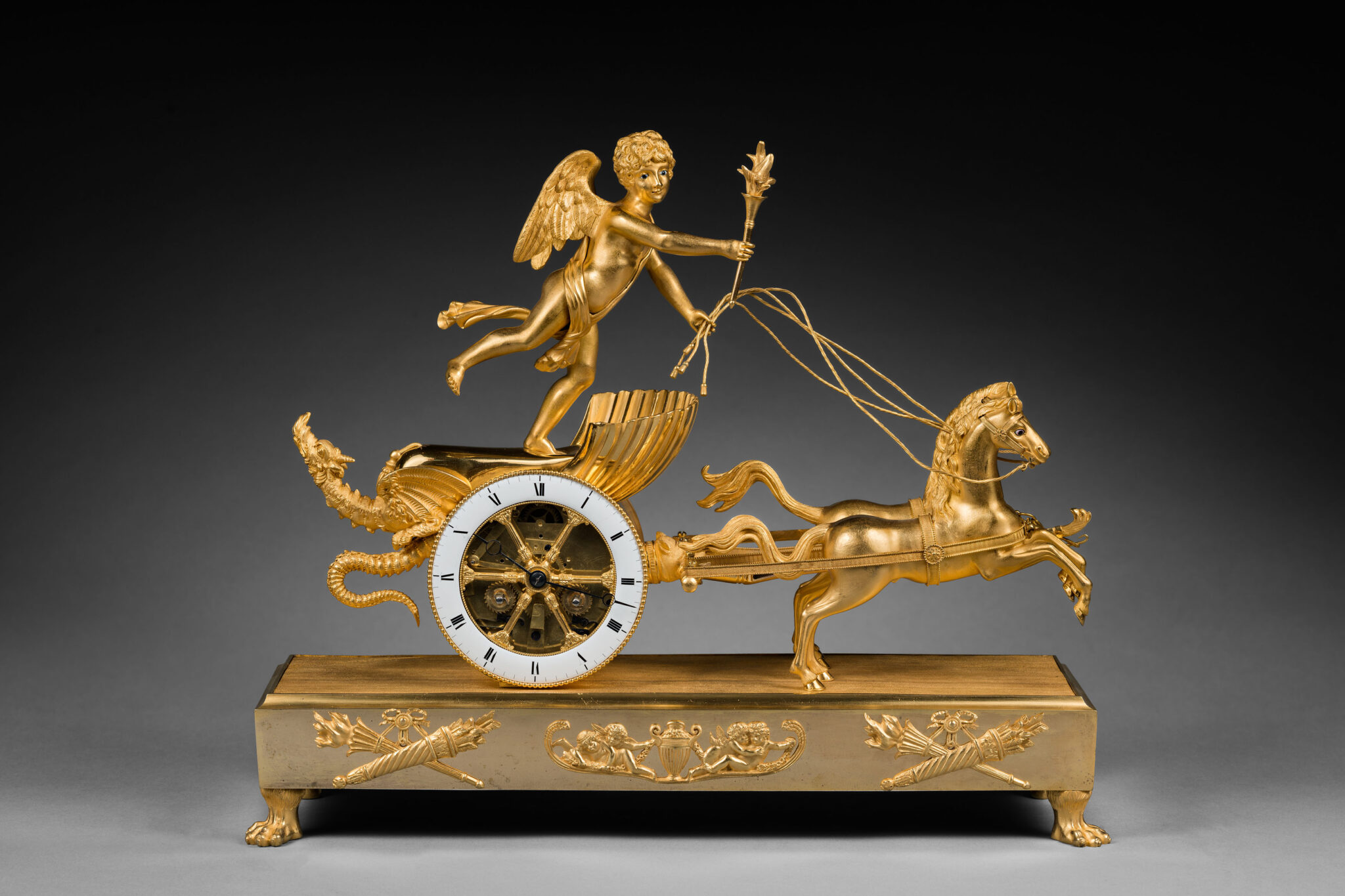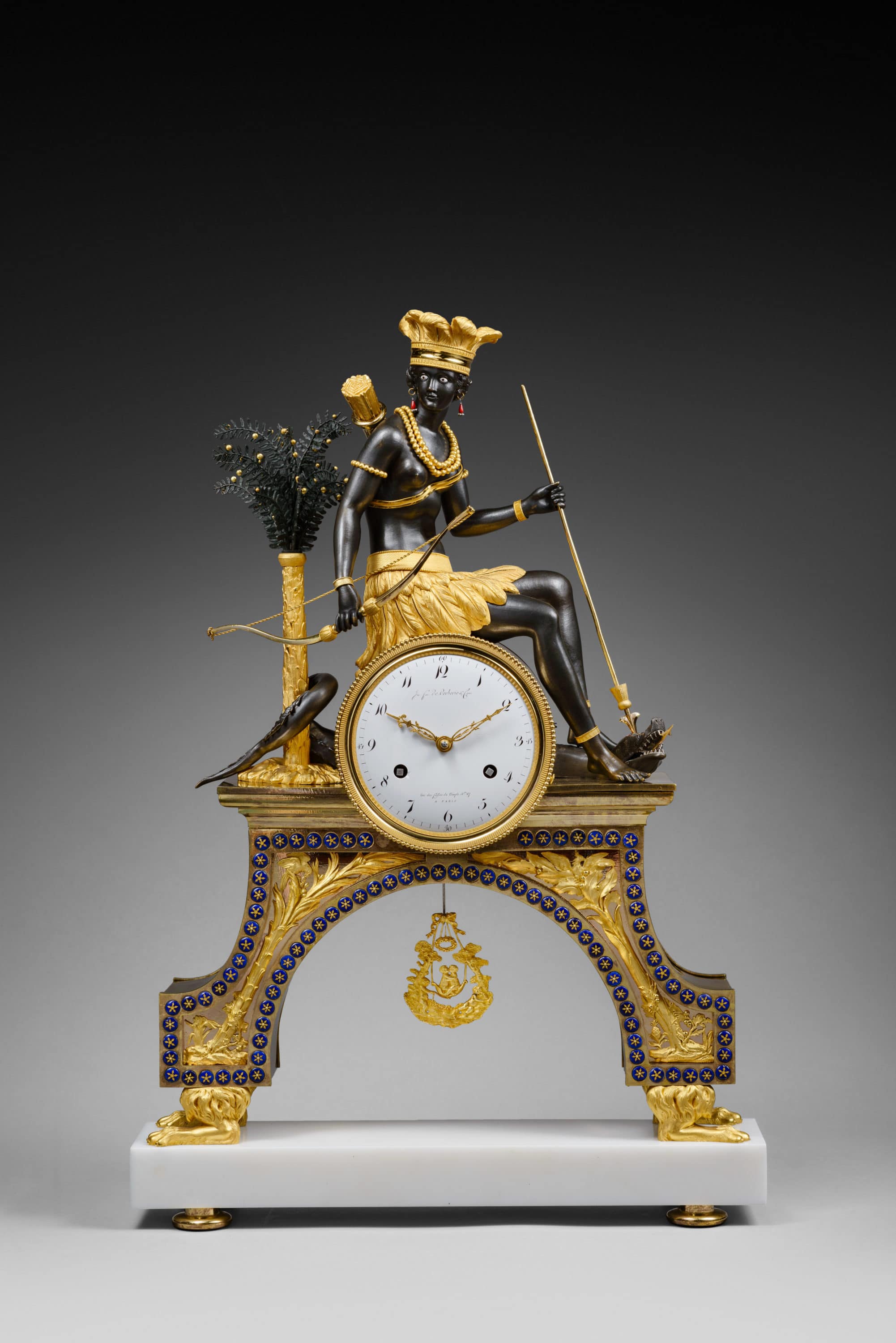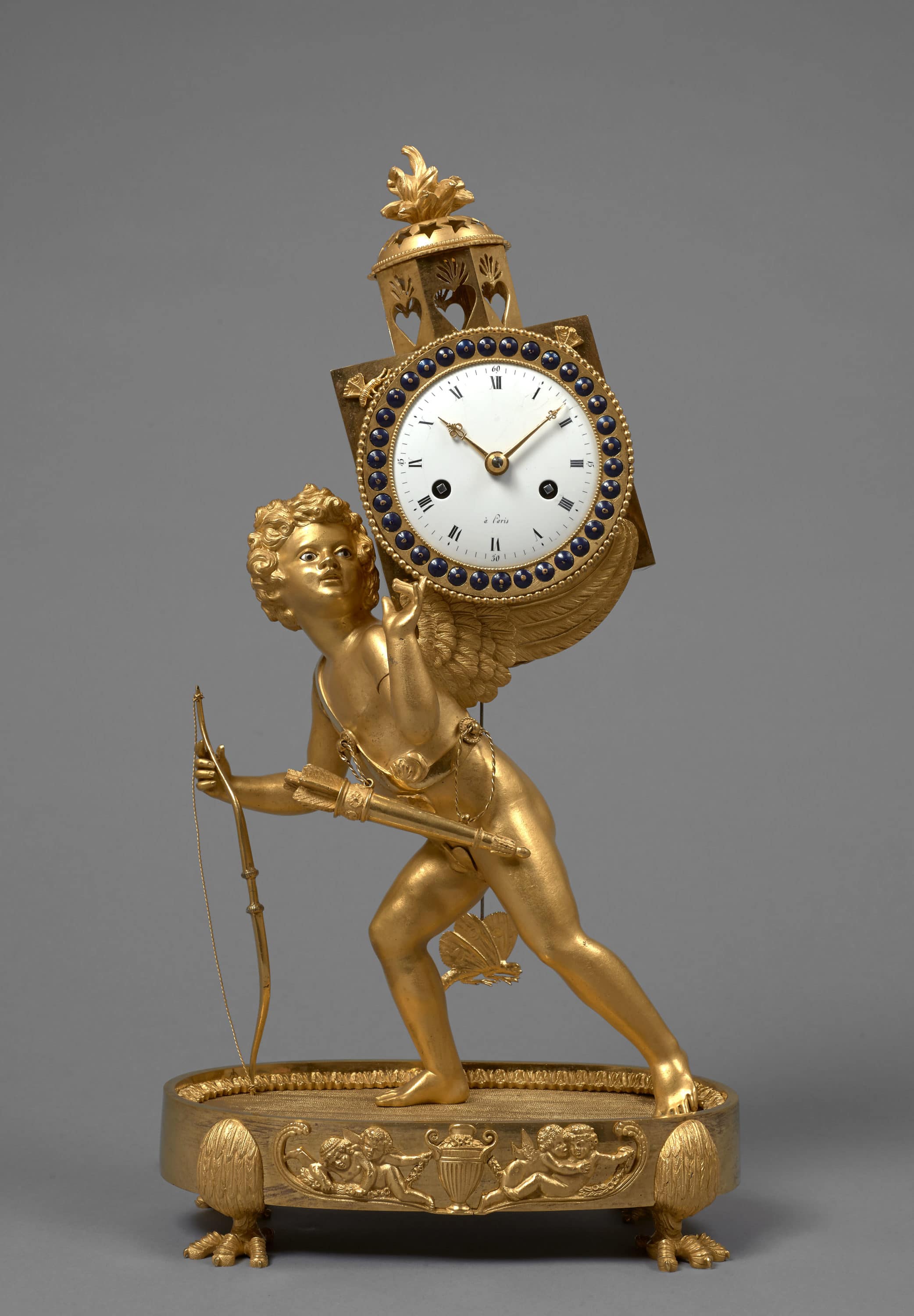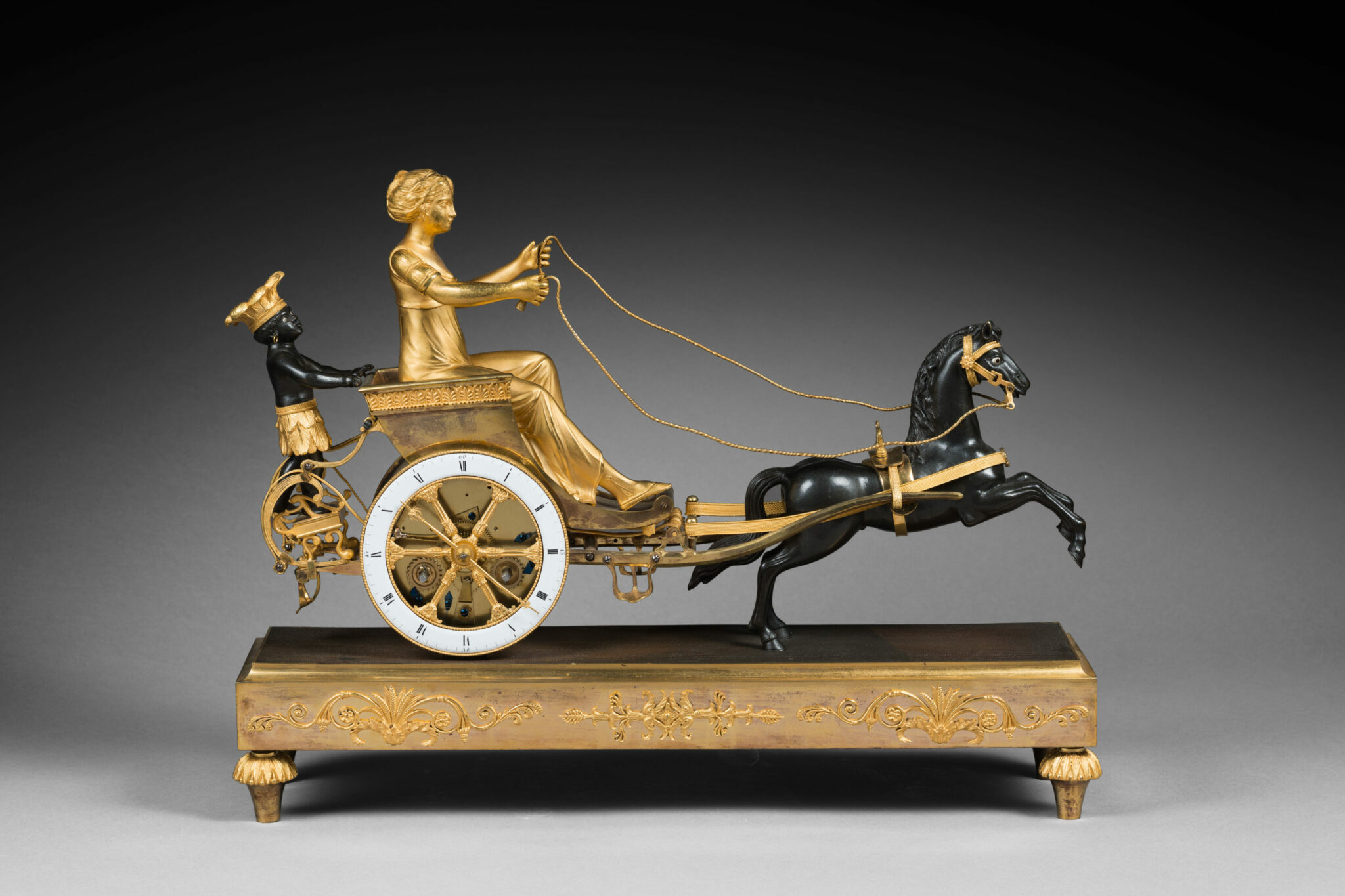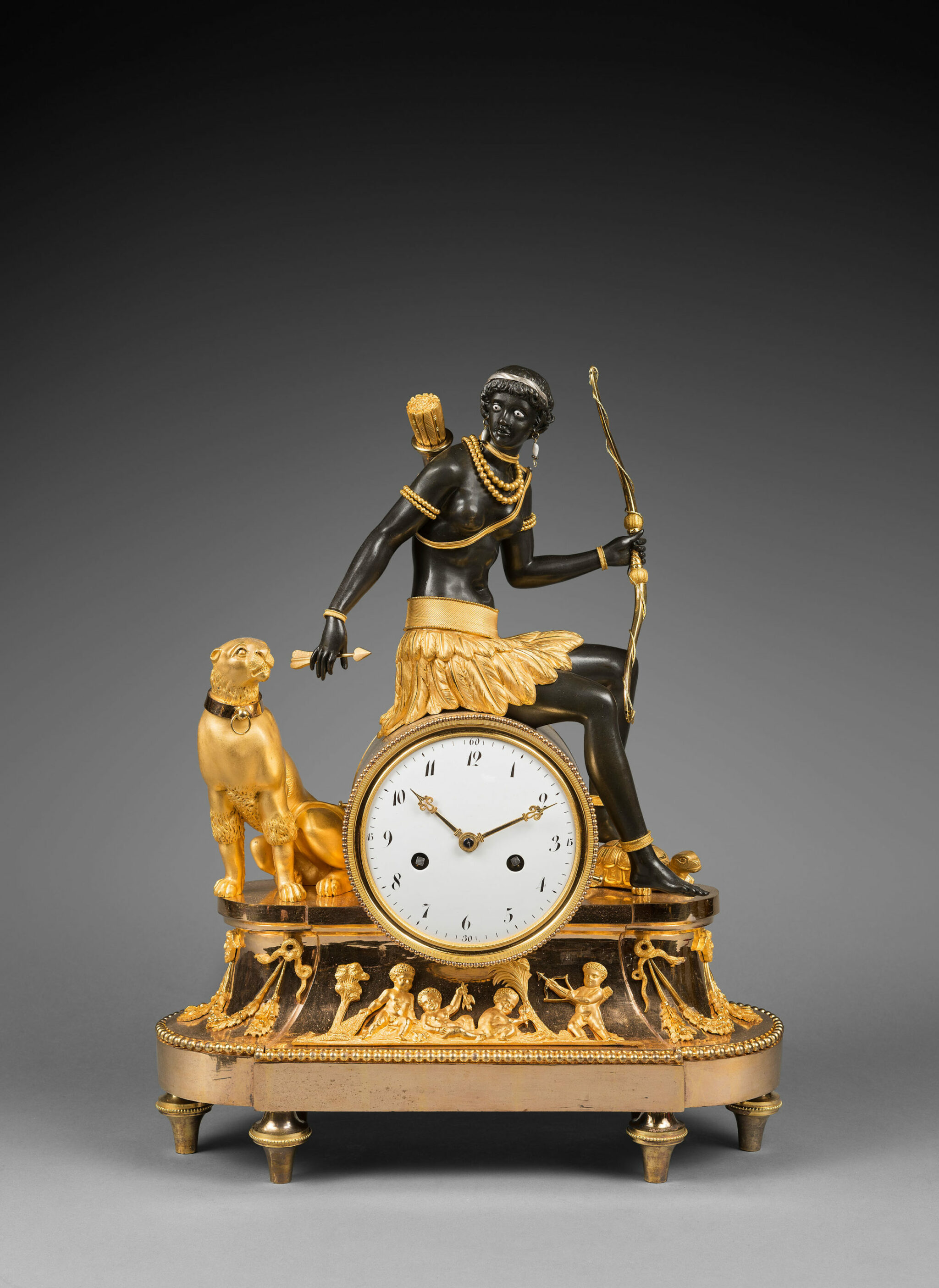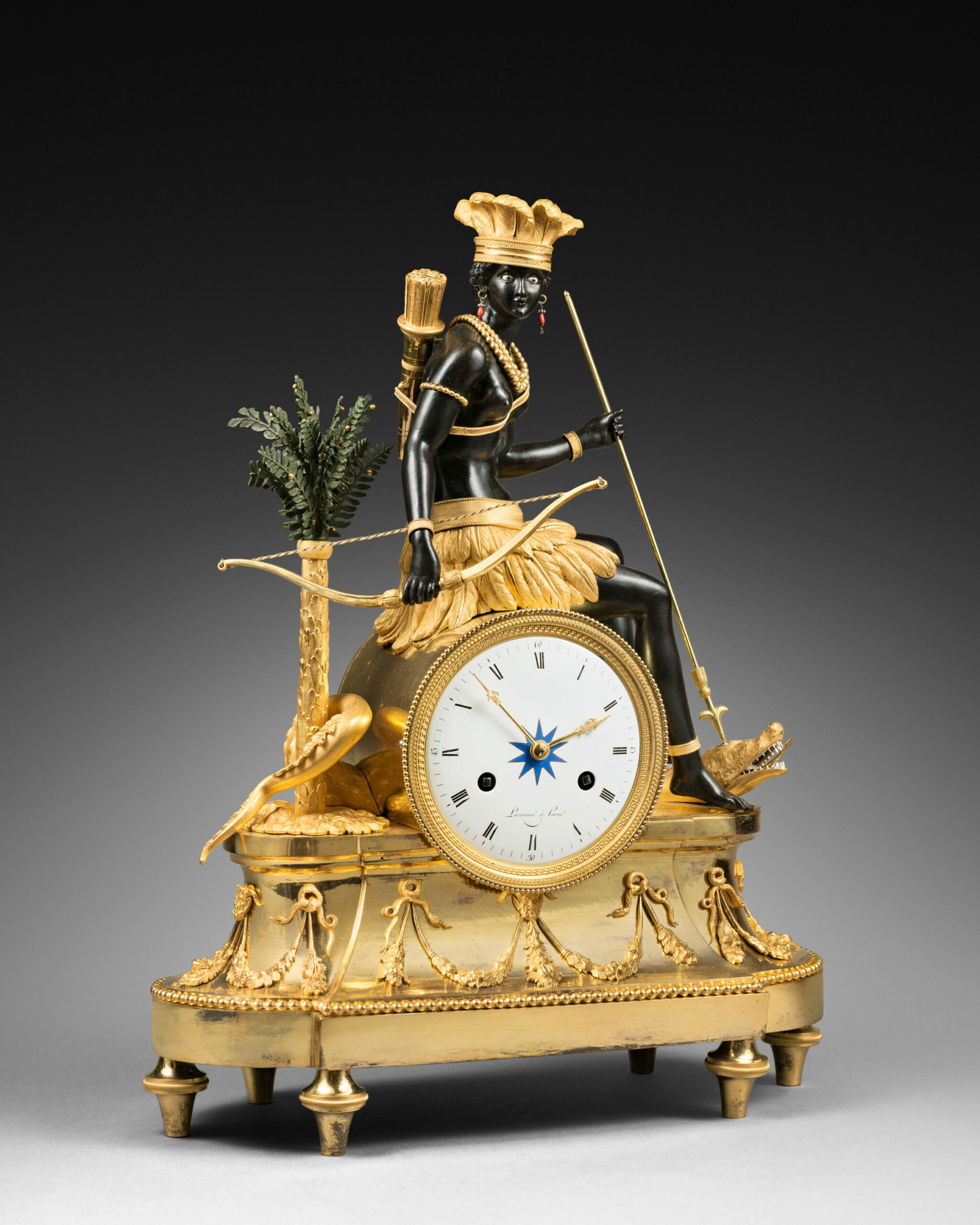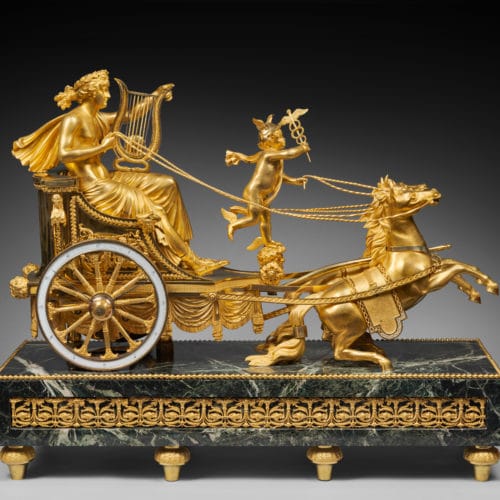Important Gilt Bronze and Green Marble Mantel Clock “Apollo’s Chariot”
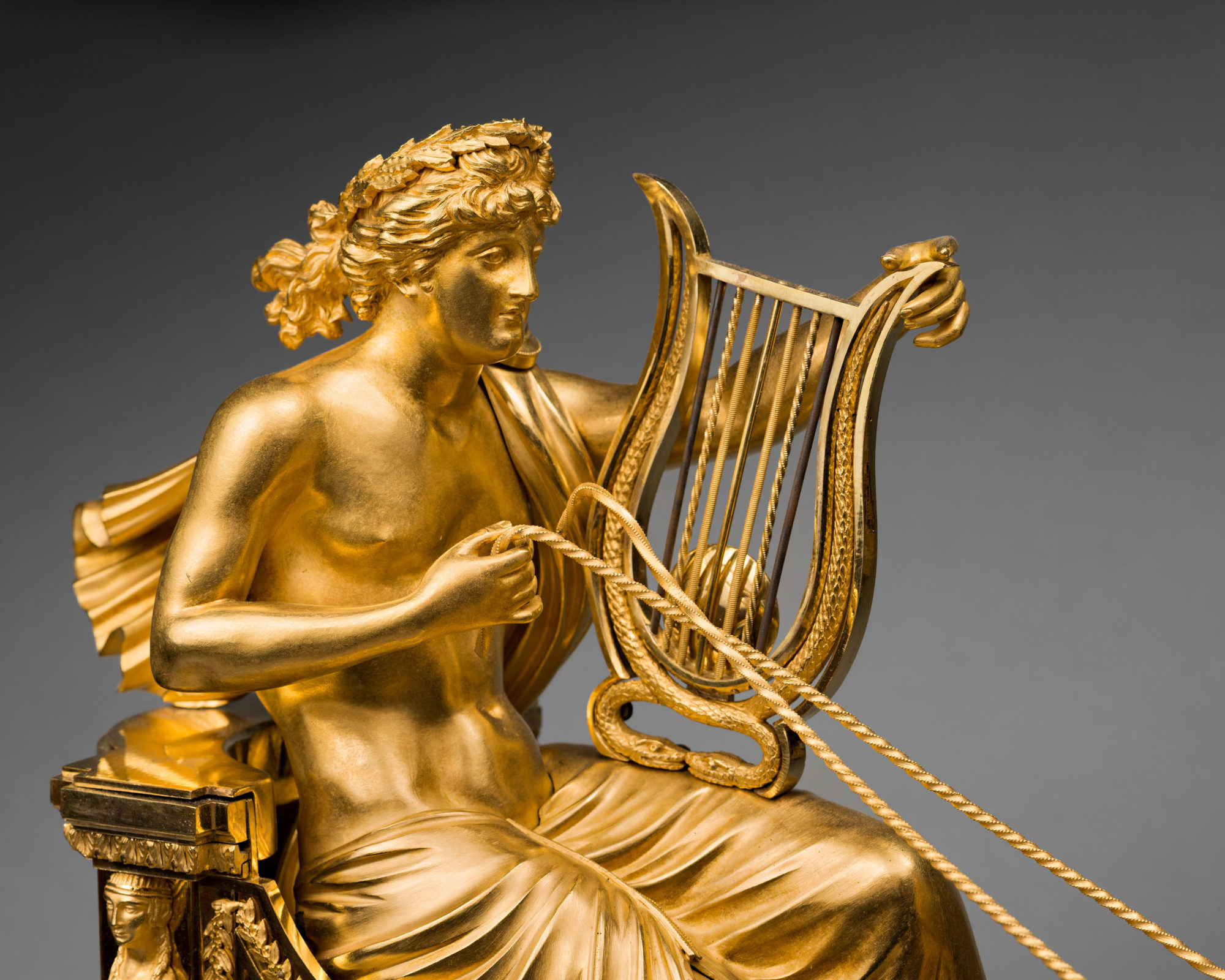
Model Attributed to the Bronzier Jean-Simon Deverberie
Paris, Empire period, circa 1810
The white enamel ring dial, which is decorated with engine-turned molding, indicates the Roman numeral hours and the outermost minutes graduations by means of pierced blued steel hands. It is fitted into the wheel of a chariot whose spokes are quivers of arrows that is elaborately adorned with scrolls, garlands, leaf friezes, eagles’ heads, Egyptian herms wearing nemes headdresses, mascarons, lions’ heads, a fringed drapery, and rosettes. Seated on the chariot is a magnificent figure of Apollo, the god of music. He is draped in a toga that is fluttering in the wind. Apollo is wearing a laurel leaf crown and holds a seven-stringed lyre in one hand and the reins in the other. A winged Cupid with winged heels stands at the front of the chariot; he is wearing Mercury’s helmet and is holding a caduceus. He holds the reins of two rearing horses with elaborate saddlecloths. The quadrangular green marble base is decorated with bead friezes, with reserves decorated with pierced friezes alternating with flowers, scrolls, baskets, and flaming torches. The clock rests upon eight feet that are finely chased with stylized leaves.
Discover our entire collection of antique french empire mantel clocks for sale online or at the gallery.
Before the 19th century Parisian clockmakers and bronze casters rarely used the chariot as a decorative or ornamental motif. It was not until the reign of Napoleon and the advent of the Empire period that the first chariot clocks appeared, featuring gods, goddesses, and heroes riding in majestic two- or four-wheeled chariots. They embodied the military virtues that were extolled by the Emperor’s Marshals. The present clock, made within that particular context, features an unusual composition that may be confidently attributed to Jean-Simon Deverberie, one of the finest Parisian bronziers of the Empire period. Identical in design to a model that the same size and is also based on the Apollo theme, it bears the signature “Inv. et fait par Deverberie rue Barbet au Marais Paris”. One such chased and gilt bronze example was formerly in the Galerie Gismondi in Paris (illustrated in J-D. Augarde, Les ouvriers du Temps, La pendule à Paris de Louis XIV à Napoléon Ier, Genève, 1996, p. 143, fig. 106).
Jean-Simon Deverberie (1764 - 1824)
Jean-Simon Deverberie was one of the most important Parisian bronziers of the late 18th century and the early decades of the following century. Deverberie, who was married to Marie-Louise Veron, appears to have specialized at first in making clocks and candelabra that were adorned with exotic figures, and particularly African figures. Around 1800 he registered several preparatory designs for “au nègre” clocks, including the “Africa”, “America”, and “Indian Man and Woman” models (the drawings for which are today preserved in the Cabinet des Estampes in the Bibliothèque nationale in Paris). He opened a workshop in the rue Barbette around 1800, in the rue du Temple around 1804, and in the rue des Fossés du Temple between 1812 and 1820.
